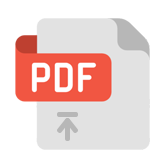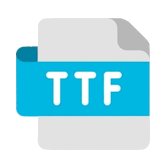The Role of Fundamental Strategies in Overcoming the Inflation
Keywords:
Fintech, Gold, Inflation, Money, Precious MetalsAbstract
High inflation rates are a complex economic challenge and have far-reaching impacts. To deal with these problems, an effective strategy involving a series of policy instruments and a deep understanding of the root problems that cause inflation is needed. This research aims to analyze strategies to overcome inflation and offer fundamental strategies. This research uses a qualitative with a descriptive-analytical method. The research data is obtained through a literature review: the relevant information from previous research results or official publications. The research results show that it is more supply-side based on analyzing the government's strategy for overcoming inflation. Based on examining the existing situation, this strategy must be complemented by a demand side: providing energy subsidies, increasing national production capacity, and moral education. Based on an in-depth study of inflation, this research provides recommendations for a more fundamental strategy in integrating financial technology (fintech) with precious metals (gold-fintech). This condition means gold-based fintech. It means realizing practical transactions using fintech, which is flexible, practical, and cashless, but the standard is using gold, not fiat money. Also, Islam views gold and silver as suitable for currency use. Apart from internal factors and conformity between nominal and intrinsic value, the uses of gold and silver are based on the sharia. Gold and silver are strong enough to withstand inflation, something that paper money-based currencies do not have. Hence, researchers suggest further research regarding the technical transition mechanism from fiat money-based to precious gold and metal-based fintech.
References
Abdullaev, A., Juliana, J., & Bekimbetova, G. (2023). Investigating the Feasibility of Islamic Finance in Uzbekistan: Survey Results. Review of Islamic Economics and Finance, 6(1), 63– 74.
Abdullah, A. (2016). An Islamic monetary theory of value and equation of exchange: evidence from Egypt (696-1517). Humanomics, 32(2), 121–150.
An-Nabhani, T. (1990). An-Nizham Al-Iqtishadi fi Al-Islam. Beirut: Darul Ummah.
Arifin, H., Damanhur, D., Puteh, A., & Dharma, Y. (2022). The Power of The Acehnese Dinar And Dirham In Muamalah Transactions. El-Amwal, 5(1), 143–166.
Batsinda, G., & Shukla, J. (2019). Inflation and profitability of commercial banks in Rwanda: A case study of bank of Kigali. International Journal of Business and Management, 14(10), 35–43.
Beal, D. J., Cohen, R. R., Burke, M. J., & McLendon, C. L. (2003). Cohesion and performance in groups: a meta-analytic clarification of construct relations. Journal of Applied Psychology, 88(6), 989.
Bernstein, P. L. (2012). The power of gold: the history of an obsession.
John Wiley & Sons. Dasgupta, Z., & Chowdhury, I. (2023). Monetary policy in the midst of cost-push inflation. Economic & Political Weekly, 58(22), 42–50.
De Mendonça, H. F., & Trigo, N. F. (2023). What is the effect of imported inflation and central bank credibility on the poor and rich? Applied Economics, 1–24.
Dikiy, A., Lepyokhina, E., Nikolaienko, Y., Kochevoi, M., Kolomina, O., & Shuplat, O. (2019). The impact of inflation volatility on an enterprise’s innovation strategy. International Journal of Innovative Technology and Exploring Engineering, 8(12), 193–197. https://doi.org/10.35940/ijitee.L3546.1081219
Duffee, G. R. (2018). Expected inflation and other determinants of Treasury yields. The Journal of Finance, 73(5), 2139–2180.
Dwihapsari, R., Kurniaputri, M. R., & Huda, N. (2021). Analisis Efektivitas Kebijakan Moneter Dalam Perspektif Konvensional dan Syariah Terhadap Inflasi di Indonesia Tahun 2013-2020. Jurnal Ilmiah Ekonomi Islam, 7(2), 980–993.
Eden, M., & Kay, B. S. (2019). Safe Assets as Commodity Money. Journal of Money, Credit and Banking, 51(6), 1651–1689.
Emeru, G. M. (2020). The determinants of inflation in Ethiopia: A multivariate time series analysis. Journal of Economics and Sustainable Development, 11(21), 53–62.
Fauziyah, W. E. N. (2016). Pengaruh Bi Rate Dan Jumlah Uang Yang Beredar Terhadap Tingkat Inflasi di Indonesia. Jurnal Pendidikan Ekonomi (JUPE), 4(3).
Friedman, M. (1993). Book Review: Money mischief, episodes in monetary history. Journal of Political Economy, 101, 203–206.
Gamaliy, V., Shalimova, N., Zhovnovach, R., Zahreba, M., & Levchenko, A. (2018). Exchange rates: The influence of political and economic events. A fundamental analysis approach. Banks and Bank Systems, 13(4), 131–142.
Guerrieri, V., Lorenzoni, G., Straub, L., & Werning, I. (2022). Macroeconomic implications of COVID-19: Can negative supply shocks cause demand shortages? American Economic Review, 112(5), 1437–1474.
Guindon, G. E., Paraje, G. R., & Chávez, R. (2018). Prices, inflation, and smoking onset: The case of argentina. Economic Inquiry.
Haryono, E. (2023). Pemerintah dan Bank Indonesia Menyepakati Lima Langkah Strategis untuk Menjaga Inflasi Tahun 2023. Departemen Komunikasi Bank Indonesia, 16.
Jain, M. P., Sharma, A., & Kumar, M. (2022). Recapitulation of Demand-Pull Inflation & Cost- Push Inflation in An Economy. Journal of Positive School Psychology, 2980–2983.
Juliana, J. (2017). Uang dalam Pandangan Islam: Kritik terhadap Konsep Grasham. Amwaluna: Jurnal Ekonomi Dan Keuangan Syariah, 1(2), 217–230.
Kaivo-oja, J. R. L., & Lauraeus, I. T. (2018). The VUCA approach as a solution concept to corporate foresight challenges and global technological disruption. Foresight, 20(1), 27–49.
Kaldor, N. (1970). The case for regional policies. Scottish Journal of Political Economy, 17(3), 337–348.
Kamel, B., & Mhamed, B. (2021). The impact of imported inflation on domestic inflation in Algeria: An ARDL Testing Approach) 2019-1990. Prospects, 5(02), 576–595.
Kočenda, E., & Varga, B. (2018). The Impact of Monetary Strategies on Inflation Persistence *. International Journal of Central Banking.
Krichene, N., & Ghassan, H. B. (2019). The pre‐eminence of gold and silver as Shariah money. Thunderbird International Business Review, 61(5), 821–835.
Liu, C., Shi, J., Wang, H., Yan, X., Wang, L., Ren, J., Parascandola, M., Chen, W., & Dai, M. (2021). Population-level economic burden of lung cancer in China: Provisional prevalence- based estimations, 2017− 2030. Chinese Journal of Cancer Research, 33(1), 79.
Mahlstedt, M., & Zagst, R. (2016). Inflation protected investment strategies.
Risks, 4(2), 9. Marlina, R., Juliana, J. J., Adila, N. A., & Robbani, M. B. (2019). Islamic Political Economy: Critical Review of Economic Policy in Indonesia. Review of Islamic Economics and Finance, 2(1), 47–55.
Matiushin, D. (2019). Financial Analysis of High-Value Commodities Portfolio: Gold and Silver.
Maune, A., Matanda, E., & Mundonde, J. (2020). Is money supply the cause of inflation in Zimbabwe? An empirical examination. Acta Universitatis Danubius. OEconomica, 16(3).
Meltzer, A., & Robinson, S. (1989). Stability under the gold standard in practice. In Money, History, and International Finance: Essays in Honor of Anna J. Schwartz (pp. 163–202). University of Chicago Press.
Munafaroh, M., & Masyhuri, M. (2019). Analisis Kritis Terhadap Pemikiran Max Weber (Perspektif Islam). Jurnal Pemikiran Dan Ilmu Keislaman, 2(2), 390–409.
Nila Atikah, Akhmad Syafi’i, Upit Elya Rohimi, & Prieska Rani. (2023). Islamic Economic Position as a Breakfast to Reducing Inflation. Jurnal Multidisiplin Madani, 3(1), 48–54. https://doi.org/10.55927/mudima.v3i1.2423
Öztürk, S., Sözdemir, A., & Ülger, Ö. (2014). The effects of inflation targeting strategy on the growing performance of developed and developing countries: Evaluation of pre and post stages of global financial crisis. Procedia-Social and Behavioral Sciences, 109, 57-64.
Pardo Pardo, G. O., & Clavijo Cortés, P. H. (2018). An evaluation of the inflation targeting strategy in Colombia. Revista Finanzas y Política Económica, 10(1), 189–210.
Peie, N., Mohamed, S., Yusoff, N. S. M., Joreme, A. A., & Rosli, M. A. (2017). Can gold dinar replace fiat money as currency? Journal of Emerging Economies and Islamic Research, 5(3), 63–71.
Pujiyono, A. (2004). Dinar dan sistem standar tunggal emas ditinjau menurut sistem moneter Islam. Jurnal Dinamika Pembangunan (JDP), 1(Nomor 2), 144–152.
Putra, D. A., Juliana, J., Firmansyah, F., & Marlina, R. (2023). The Effect Of Interest Rate, Inflation Rate And Rupiah Exchange Rate On Investment Results In Sharia Life Insurance Companies In Indonesia. TSARWATICA (Islamic Economic, Accounting, and Management Journal), 5(1), 41–57.
Puttaswamaiah, K. (2019). Paul Samuelson and the foundations of modern economics. Routledge.
Reeves, J. (2023). Southeast Asian States Have Their Own Views on the Ukraine War. Asia Policy, 30(2), 55–63.
Rothbard, M. N. (2005). Paul Samuelson and the foundations of modern economics. Libertarian Review Press.
Saadillah, R., . K., & . F. (2019). Impact of Inflation, Interest Rate, and Industrial Production Index (IPI) on the Amount of Zakat in Central Baznas Period 2011-2017. KnE Social Sciences, 3(13), 1371. https://doi.org/10.18502/kss.v3i13.4291
Soto-Acosta, P. (2020). COVID-19 pandemic: Shifting digital transformation to a high-speed gear. Information Systems Management, 37(4), 260–266.
Stiglitz, J. E. (2010). The Stiglitz Report: Reforming the International Monetary and Financial Systems in the Wake of the Global Crisis. The News Press, 37(4). https://thenewpress.com/books/stiglitz-report
Stiglitz, J. E., & Regmi, I. (2023). The Causes of and Responses to Today’s Inflation. Industrial and Corporate Change.
Su, C. W., Khan, K., Tao, R., & Umar, M. (2020). A review of resource curse burden on inflation in Venezuela. Energy, 204. https://doi.org/10.1016/j.energy.2020.117925
Sugiyono. (2018). Metode Penelitian Kombinasi (mixed Methods). International Journal of Physiology, 260–266.
Teupe, S. (2020). Keynes, inflation and the public debt: How to Pay for the War as a policy prescription for financial repression? Financial History Review, 27(2), 187–209. https://doi.org/10.1017/S0968565020000074
Urmetzer, S., & Pyka, A. (2017). Understanding innovation processes: An overview of evolutionary innovation models. REELER Working Paper Series.
Utomo, Y. T., Hanafi, S. M., Juliana, J., & Anggrismono, A. (2023). Financial System Stabilization in Islamic Economics Perspective. Jurnal Kajian Peradaban Islam, 6(1), 63– 68. https://doi.org/10.47076/jkpis.v6i1.176
Vera, L. (2017). In search of stabilization and recovery: macro policy and reforms in Venezuela. Journal of Post Keynesian Economics, 40(1), 9–26. https://doi.org/10.1080/01603477.2016.1273069
Xu, Y., Liu, Z. X., Su, C. W., & Ortiz, J. (2019). Gold and inflation: Expected inflation effect or carrying cost effect? International Finance, 22(3), 380–398. https://doi.org/10.1111/infi.12347
Yudianto, Y., & Supriyadi, D. (2023). Dampak Perselisihan Ukraina-Rusia 2022 Terhadap Perekonomian, Inflasi, Perdagangan Internasional di Asia Tenggara. Coopetition: Jurnal Ilmiah Manajemen, 14(2).
Yusanto, I. M., & Karebet, M. (2002). Menggagas Bisnis Islami (Issue 2). Gema Insani Press.
Zahara, F. (2020). The Analysis of Maqashid Syariah on the Use of Fiat Money and Dinar Dirham. Budapest International Research and Critics Institute (BIRCI-Journal): Humanities and Social Sciences, 3(2), 1216–1226. https://doi.org/10.33258/birci.v3i2.964
Zainuddin, Z. (2015). Analisis Dampak Inflasi , Pdrb Dan Perkembangan Upah Minimum Regional Terhadap Indeks Pembangunan Manusia Masyarakat Di Provinsi Aceh. JEMSI (Jurnal Ekonomi, Manajemen, Dan Akuntansi), 1(1), 45–52. https://doi.org/10.35870/jemsi.v1i1.243
Downloads
Published
Issue
Section
License
Copyright (c) 2024 Erwin Permana, Nuruddin Subhan, Juliana Juliana, Muhammad Abduh

This work is licensed under a Creative Commons Attribution-ShareAlike 4.0 International License.















